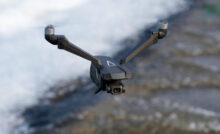Canon G5 X Mark II vs. Sony RX100 VI


Sony’s RX100 line of point-and-shoot digital cameras have been the undisputed king of their category for the past several years. They were the first to offer 4K recording, Wi-Fi, a touchscreen and a very capable 1″ sensor all in a compact package. While Sony broke ground and lead the high-end point-and-shoot market, Canon — who’s PowerShot line used to be a vlogger’s dream — languished with minimal spec bumps.
Now, with Canon’s announcement of the new (and much improved) PowerShot G5 X Mark II and G7 X Mark III, they are once again a serious contender for the title of “Best Point-and-Shoot”. Let’s take a look at how their best offering, the G5 X Mark II, compares to Sony’s best, the RX100 VI.
Spec Comparison
| Canon G5 X Mark II | Sony RX100 VI | |
| Price | $899 | $1198 |
| Megapixels | 20.2MP | 20.1MP |
| Optical Zoom | 5x (24mm-120mm) | 8.3x (24mm-200mm) |
| Aperature | f/1.8 to 2.8 | f/2.8 to 4.5 |
| Video Resolution | 4K/29.97fps | 4K/24fps or 4K/29.97fps |
| Slow-Motion (1080p) | 120fps | 120, 240, 480, 960fps |
| LOG/Flat Mode | NA | S-Log2 & S-Log3 |
| Weight | 12 oz | 10.62 oz |
Looking at the specs, Canon’s G5 X Mark II only clearly beats the RX100 VI in two areas: price and max aperture. Of the two, the $300 lower price will probably affect people’s decision more, though the larger max aperture is especially useful given the small sensor size of these cameras. The f/1.8-2.8 aperture range Canon offers will allow in more light as well as produce more bokehlicious images.
While the cameras’ specs don’t point to either one as being clearly superior at taking photos, the same can not be said for video. The Sony RX100 VI is just an absolute beast of a camera for recording video. Offering S-Log2/3 for greater dynamic range, 1080p/120+fps video, and even uncompressed 4K/4:2:2 HDMI output for recording on an external recorder, the RX100 VI’s video specs read like that of a high-end cinema camera. The G5 X Mark II is no slouch when it comes to video recording for a point-and-shoot under $1000, but the RX100 VI still cleans up in this category.
Verdict
From the specs alone, it appears that the RX100 VI is a better camera, especially for video. It comes packed with pro video features but also costs $300 more than the more modestly specced G5 X Mark II.
Ultimately, the true test will come when we can see a side-by-side comparison of images & video shot on each camera and with Canon set to begin shipping both new PowerShots on August 2 we have less than a month to wait.
This post was last modified on 07/15/2019 9:29 am
Recent Posts
V-Copter Falcon Mini: Zero Zero Robotics teases upcoming sub-250g drone (Specs, price and more!)
After the successful launch of its HOVERAir branded drones in 2024 with the HoverAir X1,… Read More
Insta360 Product Timeline: Release dates for every camera, gimbal & accessory
Insta360 has come a long way since it started by making 360° cameras in 2015.… Read More
GoPro 13 vs DJI Action 5 Pro: Which flagship action cam wins the spec war in 2024?
With the launch of the HERO 13 (September 4th) and Action 5 Pro (September 19th),… Read More
DJI Product Timeline: The release dates of every DJI product from the Phantom 1 to Mavic 4 Pro
What started largely as a way for me to keep track of the release dates… Read More
DJI Air 2S vs Air 3 Drone Comparison
DJI's newest drone, the Air 3, features better flight time, a new OcuSync 4 transmission… Read More
GoPro HERO 11 Mini Drops To Lowest Price Yet
The GoPro HERO 11 Mini is a great camera for FPV drone pilots and those… Read More



